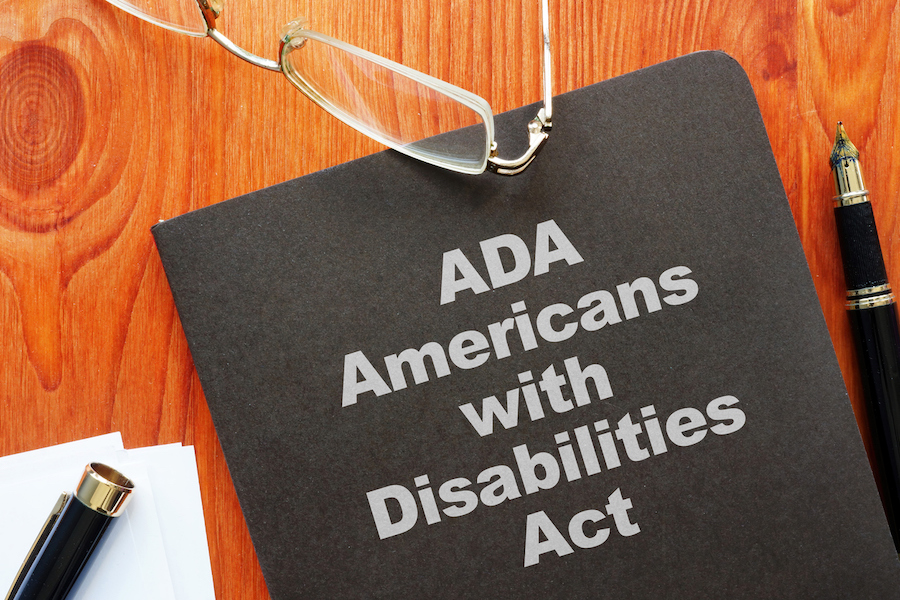The Americans with Disabilities Act (ADA) turned 30 this summer, with people across the country celebrating the landmark legislation through podcasts, virtual events, social media threads, and op-eds. Here, we take a look at the history, influence, and potential future of the ADA, as well as its ongoing significance for people with disabilities.
A Brief History
As recently as the 1960s, multiple laws existed that allowed for discrimination against people with disabilities. In certain states it was legal to sterilize individuals with disabilities without consent, involuntarily institutionalize people with mental or physical disabilities, prohibit individuals with disabilities from voting, and exclude children with disabilities from the public school system.
In the 1970s, advocates for disability rights became more active and vocal in their push for guaranteed rights and access. This was inspired largely by the civil rights movement of the 1960s and the permanent injuries faced by many soldiers returning from the Vietnam and Korean Wars. Advocates successfully lobbied for protections against discrimination throughout the 1970s and 80s, with increasing awareness that the country needed to enact comprehensive legislation to ensure regulations would be consistently enforced.
The ADA was signed into law by George H. W. Bush on July 26, 1990, and guaranteed people with a diverse range of disabilities equal opportunities, protection, and access. Like its predecessor – the Civil Rights Act of 1964 – the ADA applied the concept of equal rights for people with disabilities to education, employment, government and public services, buildings, telecommunications, and transportation.
Current Influence
The passage of the ADA led to a wide range of changes, including required accessibility into schools, buildings, and public spaces; accommodations for transportation, such as wheelchair lifts for buses and hand controls for cars; accommodations in education, which can include assistive technology or extra time for tests; and the inclusion of closed captioning or interpretive services for public broadcasts and events.
This has become particularly relevant as more attention and research has been focused on accurately defining and tracking the number of people in the U.S. with a disability. According to the CDC, 1 in 4 adults in America live with a functional disability. For adults aged 65 and older, that number increases to 2 in 5.
This has put approximately 61 million adults in the U.S. at greater risk during the COVID-19 pandemic, and the ADA has helped advocates and caregivers ensure individuals with disabilities are not overlooked with regard to their access to care or accommodations, nor are they denied the right to continue living where they choose, including in home- and community-based settings, while maintaining access to services.
Potential Improvements
Advocates for disability rights acknowledge there has been much progress, however, there are also opportunities for continued improvement. These include ideas like creating more consistency for academic accommodations, including those at the undergraduate and graduate level; requiring “quiet rooms” in businesses and schools for individuals with autism; increasing the number of events, trainings, or classes offered online to boost accessibility; providing more employment opportunities for people with disabilities; strengthening accommodations at polling places; and determining how to keep services intact for individuals who cannot benefit from online interventions, particularly during a crisis.
Yet, even amidst the current crisis, advocates point out that certain changes made during the COVID-19 pandemic may help “abled” people better understand and support services that benefit people with disabilities. For example, Zoom may provide a platform wherein accommodations for vision or hearing impairment can be integrated seamlessly; more people utilizing food and grocery delivery services could expand options for everyone; and telehealth may become increasingly available as an alternative to in-person visits, benefitting those with mobility issues.
The ADA remains a significant part of the history of disability rights in the U.S. and an ongoing protection for individuals with I/DD. Equally important, it provides a foundation for advocates and legislators in other countries who are working to end discrimination for those with disabilities, evidenced by the passage of laws in over 180 countries across the world.

